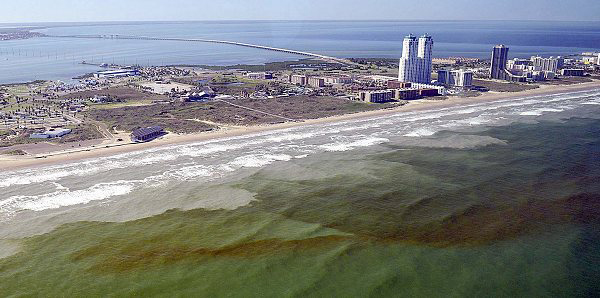Researchers study ways to disable algal bloom
By Zoe Forster

From shellfish industries on the West Coast to popular beaches in New York, human health, fishing and tourist economies are at stake wherever harmful algae thrive. In the past year alone, harmful algal blooms – also known as brown tides – forced the closure of mussel and clam fisheries from California to Washington and a string of beaches along the Great Lakes.
Harmful algal blooms are increasing worldwide. Warm, slow-moving water, combined with sunlight, nitrogen and phosphorous runoff from farm fertilizer, causes algae to grow and produce toxins. When environmental conditions pass a dangerous threshold, algae growth spirals out of control and upsets the water’s natural balance.
With support from the Academic Venture Fund, a team of Cornell researchers set out to understand the interdependent environmental and cellular triggers that lead to sudden, devastating algal growth. Scientists currently understand the factors encouraging brown tides to flourish but not the cell processes occurring inside the algae.
Led by bioengineer expert Mingming Wu, the team designed a hydrogel-based microfluidic device that screens multiple environmental conditions that promote algal bloom. The researchers believe algae cells communicate with one another and work as a team. They have discovered that as cell density increases, algae start to form a colony and behave as a group.
With the help of Cornell microbiologist Stephan Winans, the team successfully detected quorum-sensing molecules in Microcysistis bacteria, a major bloom-forming strain. Winans’ research focuses on how quorum-sensing bacteria identify chemical signals released by host plants or sibling bacteria. Understanding how cells inside the algae communicate with one another will help Wu’s team understand why algae form the way they do and potentially reveal a way to disable the communication – and prevent explosive growth.
The team’s new device tests levels of nitrogen and phosphorous in the nutrient cocktail that fuels harmful algal blooms. The device looks similar to a children’s Connect Four board game, with a suspended grid filled with empty hollow circles. The circles – each containing a pinch of algae – are made of a gel membrane that allows the cocktail to flow through the algae. Each circle receives a different potency of cocktail to help the team pinpoint the exact conditions that foster sudden growth.
“We have now a tool in hand that allows us to quickly dissect conditions under which bloom occurs,” Wu said. “We plan to make a heat map that will help other researchers predict and diagnose harmful algal bloom conditions.”
Zoe Forster ’17 is an intern at the Atkinson Center for a Sustainable Future.
Media Contact
Get Cornell news delivered right to your inbox.
Subscribe